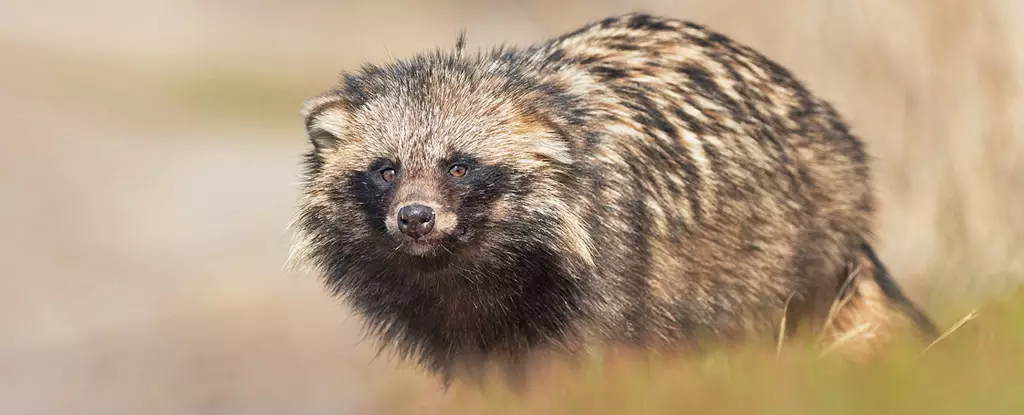The COVID-19 pandemic has altered lives across the globe, prompting intense scrutiny regarding its origins. Reports suggest that the SARS-CoV-2 virus, the pathogen responsible for COVID-19, first transitioned to humans from wildlife species in a market setting in Wuhan, China. A significant recent study sheds light on the possible connections between specific animal species and the onset of this global health crisis. By employing metagenomic RNA data analyzed during the early stages of the pandemic, researchers have brought forth compelling evidence that supports the idea of a zoonotic spillover from animals to humans.
Wuhan, the capital of Hubei province, witnessed the first signs of COVID-19 late in 2019. Notably, the Huanan Seafood Market, a bustling hub for live animal transactions, became a focal point for investigations. This market operated in close proximity to the Wuhan Institute of Virology (WIV), which had been conducting research on coronaviruses, inviting speculation about the virus’s origins. The hypothesis of a laboratory leak has been suggested, despite a lack of concrete evidence. A more probable scenario posits that the virus made its way to humans from exotic mammal species at the market, given its optimal conditions for cross-species transmission.
In an effort to illuminate the genesis of the pandemic, researchers from various institutions collaborated on a groundbreaking study involving samples collected by the Chinese Centers for Disease Control and Prevention (CDC) shortly after the market was closed. Florence Débarre, an evolutionary biologist and the study’s senior author, described the data as an invaluable resource for understanding COVID-19’s origins.
The research team investigated the market on New Year’s Day in 2020, shortly after its closure due to COVID-19 concerns. Though the live animals were no longer present, environmental samples were collected from various surfaces in the market. This included swabbing animal stalls, cages, and drains to recover genetic material. By employing metatranscriptomic sequencing techniques, the scientists unveiled a vast array of RNA sequences, which they compared against early SARS-CoV-2 cases documented up until mid-February 2020.
The analysis conducted, as documented in the publication in Nature in 2023, involved over 800 samples. Although the results did not definitively identify the infecting animal species, they offered significant insights into those that might have acted as intermediate hosts. This study has sparked discussions about the potential roles of certain mammals, such as raccoon dogs and civets, in the transmission dynamics of the virus.
The new research underscored the presence of microbial DNA and RNA that point to the past existence of infected animals within the market environment. While it was noted that direct proof of infection remains elusive due to the removal of many animals before researchers arrived, the findings indicate that genetic material from animals that are known to be susceptible to SARS-CoV-2 was found in stalls coinciding with viral detections. Among these, the common raccoon dog and the masked palm civet emerged as significant species of interest, both of which have previously been linked to the spillover of coronaviruses to humans.
Ecologist Michael Worobey emphasized the alarming risk of mixing wild animals harboring viruses with densely populated urban environments. The propensity for zoonotic transmissions increases dramatically under such conditions, suggesting that more rigorous preventive measures are necessary to mitigate future risks.
The implications of this study extend beyond understanding the virus’s emergence; they also underscore the need for proactive measures to curtail zoonotic spillover risks. While the research did not conclusively prove that any particular animal species caused the pandemic, it pieced together artifacts that indicate how a scenario of infected animals being introduced to the Huanan market could have catalyzed the outbreak.
Kristian Andersen, an evolutionary biologist from the Scripps Research Institute, posited that evidence points to the initial introduction of infected animals in late 2019, igniting the pandemic. This finding compels us to not only delve into past events but also to strategize for the future, emphasizing the necessity of enhanced biosecurity measures in wildlife trade and more stringent regulations in animal markets.
As public health systems around the world emerge from the shadow of the pandemic, it becomes increasingly vital to focus not only on lab safety but also on preventing zoonotic spillovers. Such initiatives will be vital in preempting the potential for future pandemics, reinforcing the crucial intersection between environmental health, wildlife management, and human safety.
The pathway laid out by this research offers a more comprehensive understanding of the factors that contributed to the onset of COVID-19 while providing crucial lessons on preventing such occurrences in the future. As we move forward, such insights must be at the forefront of our public health endeavors.

